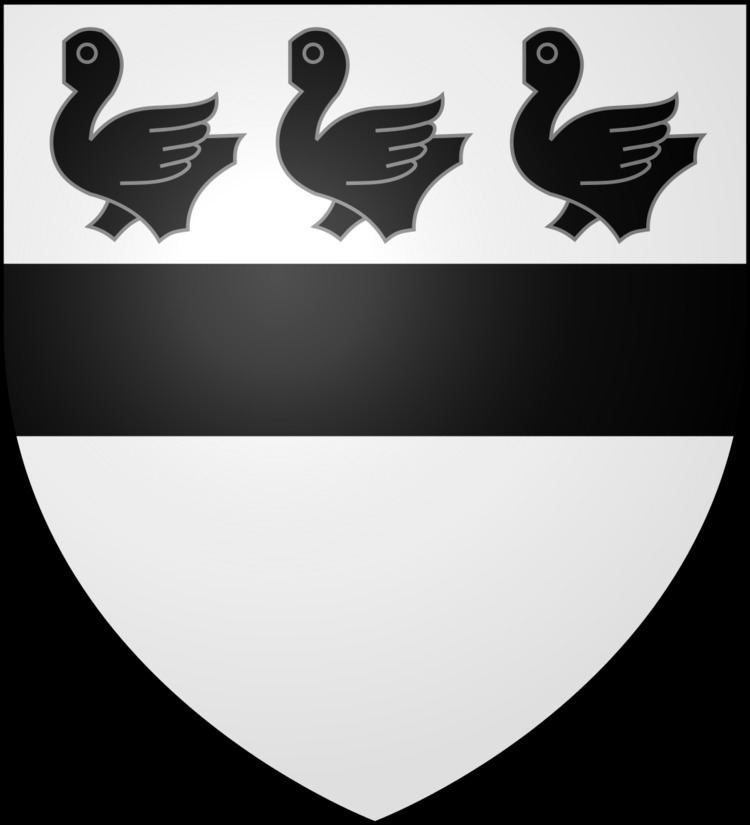Founder Francis of Beauharnais | Name House Beauharnais | |
 | ||
Estates Chateau de La Ferte-BeauharnaisPalais LeuchtenbergMariinsky Palace Titles Duke of GallieraDuke of NavarreDuke of LeuchtenbergDuke of Santa CruzMarquis of La Ferte Founded XIV century (XIV century) | ||
Beauharnais (or Leuchtenberg) is a French noble family. It is now headed by the Duke of Leuchtenberg, descendant in male line of Eugène de Beauharnais.
Contents
History
Originating in Brittany, the Beauharnais (or Beauharnois) became established in the fourteenth century in Orléans. When that city was besieged in 1429, Jehan Beauharnais played a role in its defence and by doing so witnessed to the process of Joan of Arc's rehabilitation. The Beauharnais provided the kingdom with soldiers and magistrates, and contracted alliances in several spheres, including that of the university of law in Orléans. In the 16th century, there were Beauharnais in Orléans as magistrates, merchants, canons and other professions.
From the end of the 16th century to the end of the 17th, the offices of president and of lieutenant général to the bailliage and siège présidial of Orléans were handed down hereditarily through the Beauharnais family. The most eminent of these magistrates was Francis IV de Beauharnais, sieur of la Grillère (at Vouzon, Loir-et-Cher), born in Orléans in 1630, and dying there in 1681.
At the end of the 17th century, the office of lieutenant général du bailliage d'Orléans was ceded to an allied branch, the Curaults. The most eminent of the Beauharnais thus turned to careers in the navy and the colonial administration in the Americas. Another François de Beauharnais (1665–1746) became intendant of New France (i.e. Canada), where a seigneurie was granted to him in 1707. His nephew, Francis V de Beauharnais, was made chef d'escadre des armées royales, then governor of Martinique.
The Beauharnais of Orléans were also great landholders thanks to their many seigneuries in the region. In the 15th century they were seigneurs of la Chaussée (or Miramion), fief of the parish of Saint-Jean-de-Braye, in the suburbs of Orléans. They also had interests at Sologne until the early 16th century, and Guillaume de Beauharnais held the estate of Villechauve, at Sennely. Some years later, the Beauharnais acquiring the neighbouring seigneurie of la Grillère, at Vouzon, with they held until the beginning of the 18th century (when it passed, by the marriage of a female Beauharnais, to the Choiseul-Gouffier family).
On 20 April 1752, Francis V, marquis de Beauharnais (1714–1800), governor of Martinique, maternal great-grandfather of the future Napoleon III of France, bought the seigneurie of La Ferté-Avrain, in Sologne. He was raised to a marquis by letters patent dated July 1764 with the title of La Ferté-Beauharnais, a name the commune still bears (département of Loir-et-Cher).
Genealogy
Partial genealogy (male and female lines)
Married to Anne Brachet ; 7 children, including
Married to Marie Mallet ; 3 children including
Married in 1663 to Marguerite Françoise Pivart de Chastullé ; 14 children, including
Married to Renée Hardouineau ; 2 sons
Married twice -
- his cousin Marie-Anne Pivart de Chastullé
- Marie-Euphémie Tascher de la Pagerie.
Two children from his first marriage:
In 1779 married Marie-Josèphe-Rose (known as "Joséphine") Tascher de la Pagerie. Two children :
